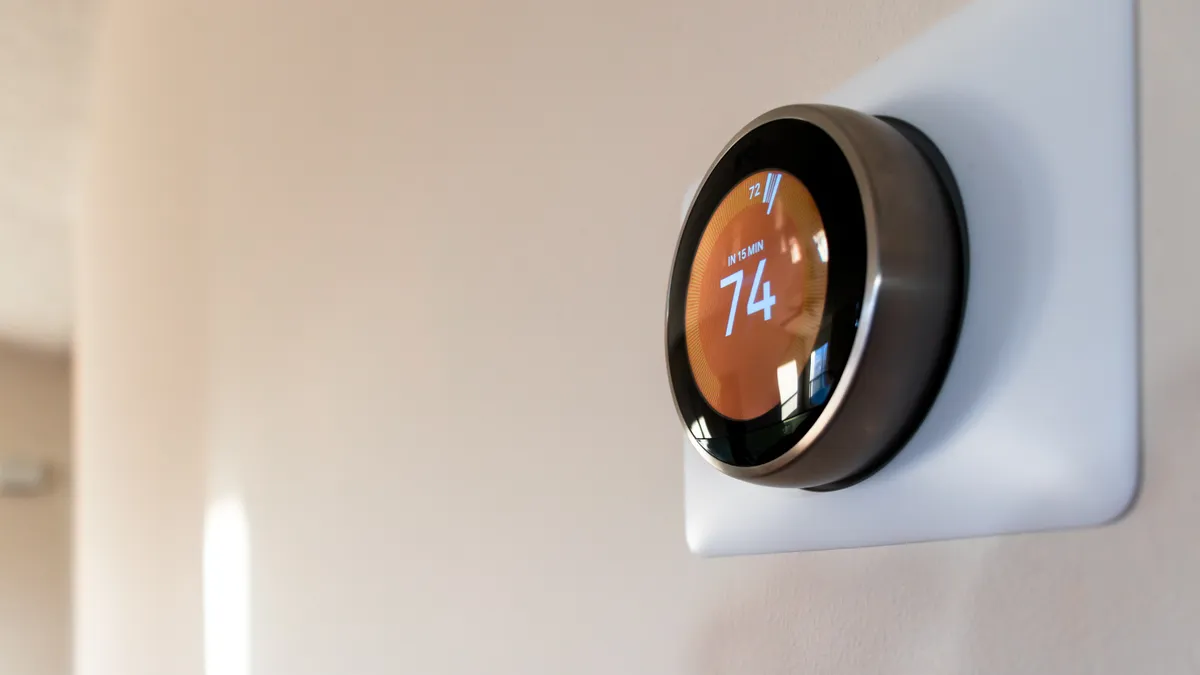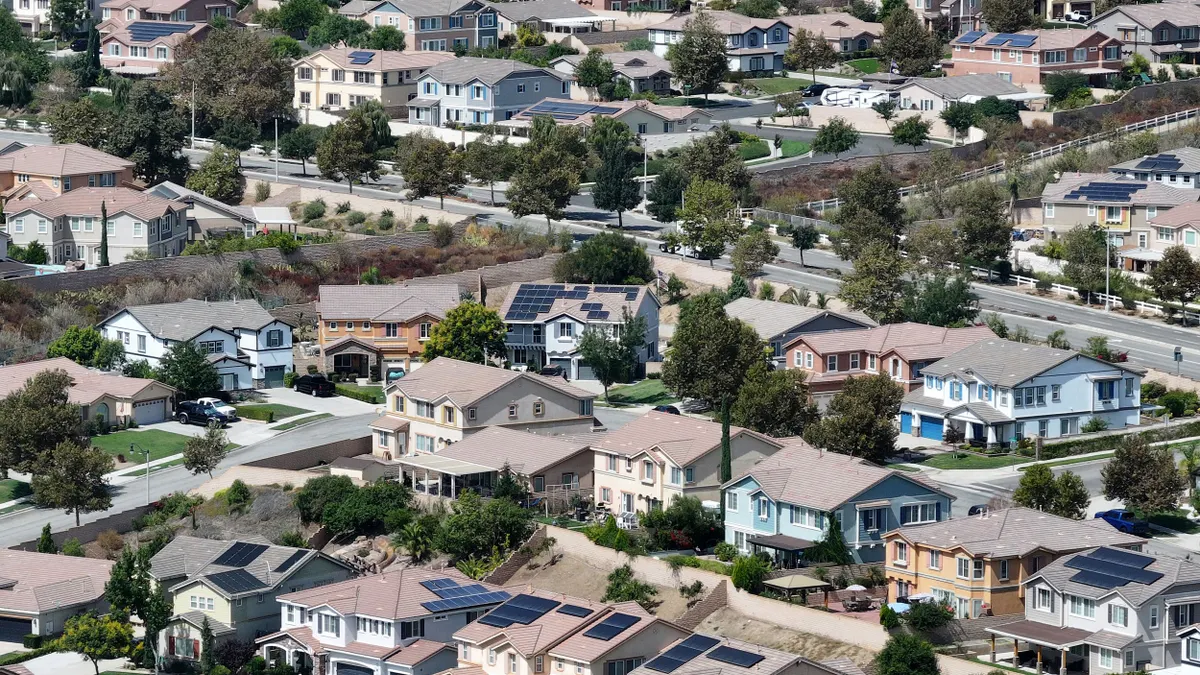The number of devices connected to the grid is growing at breakneck speed, ideally providing utilities an opportunity to control and coordinate them while balancing the grid. But analysts say that absent help from technology, the process of integrating the growing number of devices will quickly outstrip utility capabilities.
Enter Bidgely CEO Abhay Gupta, whose job is figuring out how to measure energy and get people to use it more efficiently.
"What you cannot measure, you cannot improve," he told Utility Dive in a recent interview.
The eight-year old company works with utilities serving residential customers, helping them to deliver insights into energy consumption and to nudge consumers towards more efficient devices. The company does this through disaggregation — identifying the energy consumption signatures of a variety of large appliances, mostly by analyzing smart meter data — and then delivering targeted messages to customers.
Bidgely says its energy disaggregation system can identify a range of appliances, such as HVAC systems, electric water heaters, refrigerators, pool pumps, lighting systems and electric vehicles, without placing sensors in the house. And it recently partnered on a new integrated offering that combines EnergyHub's distributed energy resource management system and connected device ecosystem, with Bidgely’s home energy management platform that the company says is powered by artificial intelligence.
The combination creates an integrated demand-side management (DSM) system aimed at providing utilities improved customer engagement, a boost to energy efficiency, and load-shaping solution.
As the grid grows in complexity, Gupta said utilities will need to turn to machine learning and artificial intelligence in order to manage and balance their distribution grids.
There are an estimated 25 billion devices already connected to the worldwide Internet of Things, "and the numbers are expanding exponentially," Richard Mroz, senior advisor at Protect Our Power, and former president of the New Jersey Board of Public Utilities, told Utility Dive. IHS Markit believes that number could reach 125 billion by 2030.
The growth of consumer connected devices "will make AI applications critical when it comes to concepts like 'prices to devices' and the consumer ease of 'set it and forget it' for price signals."

Marley Urdanick
Utility technology expert, Indigo Advisory
According to Marley Urdanick, a utility technology expert with Indigo Advisory, "the number of intelligent end point devices on the physical infrastructure is growing rapidly where enormous amounts of data [are] coming back from the grid."
Indigo said it expects the market for consumer connected devices to grow by more than 10%, year-over-year, in the next few years. "This will make AI applications critical when it comes to concepts like 'prices to devices' and the consumer ease of 'set it and forget it' for price signals," Urdanick told Utility Dive.
One of the challenges utilities face in integrating more renewables and reducing peak load is getting customers to respond to time of use rates. Utilities are looking to smart, grid-connected devices that can respond quickly and efficiently to changing electricity prices, making it easier for customers to optimize their use and benefit from the new rates.
Data quality is key to expanding demand response
But coordinating those devices requires knowing what's out there to begin with.
Bidgely says it has developed an artificial intelligence energy disaggregation process that can determine what appliances are in a home, and how much energy they are using, by analyzing the energy signatures captured in data from smart meters. Combined with EnergyHub's platform, the companies want to enable utilities to provide customers with more insight into their energy use and opportunities to save.
"We take the data from meters, and without any sensors, we identify what is happening in the home," Gupta said. "The artificial intelligence uses pattern recognition and machine learning."
Gupta calls advanced metering "the backbone of grid integration," but also acknowledges that "a few states have seen challenges in the approval of the business case for smart meter deployment."
Smart meters provide significantly more data than older devices, lending greater fidelity to Bidgely's conclusions, said Gupta. However, the company is also improving its ability to provide insights from non-smart meters as well.
According to FERC, there were 70.8 million advanced meters operating in 2016, out of 151.3 million meters in the U.S., giving them a penetration rate of 46.8%. Gupta said the figure is now approaching 60%.
But deployments are expensive, and some regulators are beginning to balk at the cost. Regulators in Kentucky and Massachusetts rejected proposals last year, and two weeks ago Virginia regulators rejected much of Dominion Energy's grid transformation proposal, including smart meter deployment and other modernization efforts.
While the data is not as reliable, and does not differentiate as many connected devices, Gupta said Bidgely's artificial intelligence can also be applied to non-smart meter data, expanding the company's potential reach.
Eventually, Gupta said virtually all meters will be smart meters, though "the last 15% will probably take more than a decade."
Data quality is a big deal, said Urdanick, in part because 80% of utility data is "generally unstructured."
"Areas such as data quality are paramount to quick wins in the [demand response] market, especially when we look to related processes like measurement and verification."
Getting inside the home
One challenge to integrating increasing devices onto the grid, is that utilities don't always know they're there.
Bidgely has utility customers in more than 10 countries and delivers its product to more than 15 million homes. It is a "customer-facing energy efficiency solution," said Gupta, while at the same time allowing utilities to better understand how customers are consuming energy.
"You find utilities interacting with customers, but they don't know what is going on in the home."

Abhay Gupta
CEO, Bidgely
"Utilities look at the substation level, not the home," Gupta said.
EnergyHub and Bidgely's integrated DSM system brings value to the utility on several different levels, said Gupta. It can create shareholder value by reducing operational costs, and it can improve customer satisfaction by giving them more control over their bill.
The third value is on the grid side, said Gupta, and may be most important to grid modernization. "You find utilities interacting with customers, but they don't know what is going on in the home," he said.
Take for example, electric vehicles. Gupta said it is not uncommon for customers to purchase an EV and never think about letting the utility know. For a single customer, that might represent a lost opportunity at an EV time-of- use rate, for instance. But as more customers with EVs start to show up, it does not take long for a neighborhood circuit to get overloaded, said Gupta.
The capacity needed to serve electric vehicle chargers is not expected to be a problem as the vehicles proliferate, but delivering the energy may be a challenge. According to the National Renewable Energy Laboratory, an electric vehicle market share of up to 3% — about 7.5 million EVs — would not significantly impact aggregate residential power demand. But even having a couple of electric vehicles in the same neighborhood could make delivering that power a problem, the lab concluded.
Distribution transformers may need to be sized up and replaced more frequently, and peak demand will be an issue in some areas, NREL's report found. Bidgely's solution provides utilities with tools to help customers shift their energy usage away from peak hours.
As renewable energy becomes more prevalent, Gupta said utility goals are shifting. Their focus will not be so much on reducing overall consumption, he said, but more directly connecting the points of consumption and generation.
"The grid was never designed for this kind of stress," said Gupta. "The answer lies in controlling and optimizing devices. It is a symphony of these homes being controlled at a massive scale. ... Once you know what is happening in the homes, you can balance the grid."





















